“Except I shall see in his hands the print of the nails, and put my finger into the print of the nails, and thrust my hand into his side, I will not believe”
A ‘Doubting Thomas’ is a person who refuses to believe without direct, personal experience. It’s a biblical reference (John 20: 24-29) to the apostle Thomas, who refuses to believe other witnesses to the resurrection until Jesus appears to the assembled disciples eight days later. Thomas – his demand for direct evidence met – proclaims his faith.
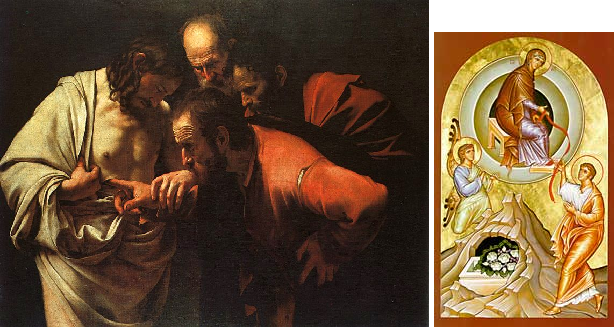
Because the resurrection is fundamental to christian theology, Paul, in Corinthians stresses the strength of witness to the resurrection: Jesus appeared to Peter, to the rest of the Twelve, to five hundred other brethren. This is important because:
And if Christ be not raised, your faith is vain; ye are yet in your sins.
Then they also which are fallen asleep in Christ are perished.
If in this life only we have hope in Christ, we are of all men most miserable.– 1 Corinthians 15: 17-19, The Holy Bible, King James Version. (My emphasis)
The Bible lays it’s claim to a basic tenet that can be understood by readers of any time: Seeing is believing.
In the context of modern science ‘seeing is believing’ can be a tricky concept: the observer is always several technological and methodological steps removed. In the context of brain science, it’s hard to get direct evidence without breaking the very thing that piqued your interest in the first place.
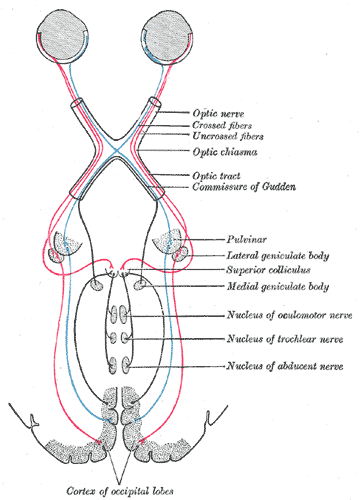
The visual system has a special place in neuroscience, as perhaps the poster child for progress in understanding how information about the world gets from out there, to in here, our conscious and unconscious perceptions of that world. That might be because, as the phrase Seeing is Believing suggests, our visual sense has a special place in how we interact with the world. It might also be because the visual system begins with a bit of neural tissue that is easier to get at: the retina, in your eye.
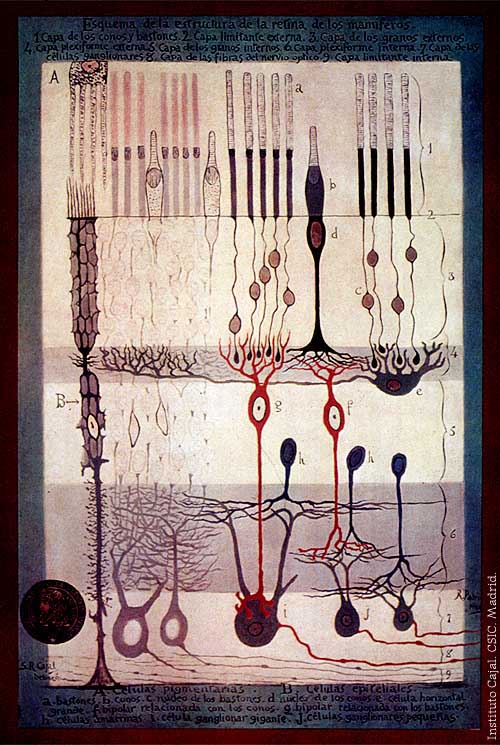
Your retina houses specialised cells that contain photoreceptors, that transduce light into biological signals. Optic nerve fibres, which bear information from the retina to the brain, accept inputs from specific retinal cells in particular ways that define their ‘receptive fields’. For example, in the picture below an ‘ON centre’ cell is excited by light that falls on retinal cells in the centre of its receptive field, but is inhibited by light that falls on the periphery. This makes it a ‘point detector’.
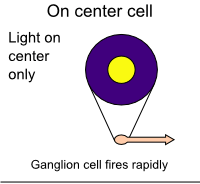
‘Simple cells’ in the primary visual cortex (at the back of your head, and the bottom of the visual system schematic pictured earlier) collect these inputs to form their own receptive fields. The receptive fields of the ON centre cells line up in such a way that that simple cells are most responsive to lines of a specific orientation (below). They are ‘line detectors’.
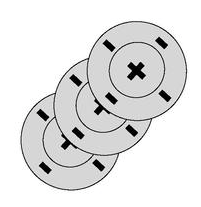
A higher level of organization is the orientation column, a region of the visual cortex whose neurons respond to line stimuli of varying angles in an organised way: as you go along the column the preferred angle changes in a gradual way.
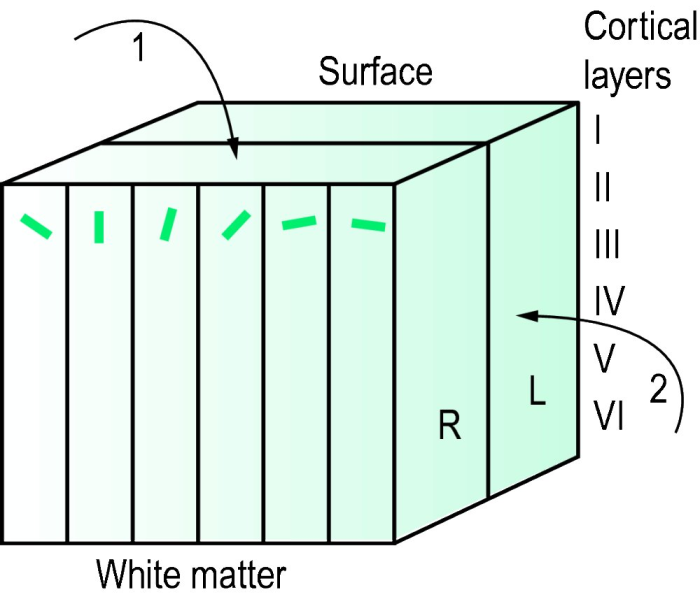
You might object that we don’t experience the world in terms of free-floating edges and lines, but as an integrated whole. But studies that take advantage of ‘multistable’ perceptual phenomena like the Necker cube or a Rubin vase (below) can start to pry into subjective experience, because the perception changes over time despite the fact that the stimuli are static.
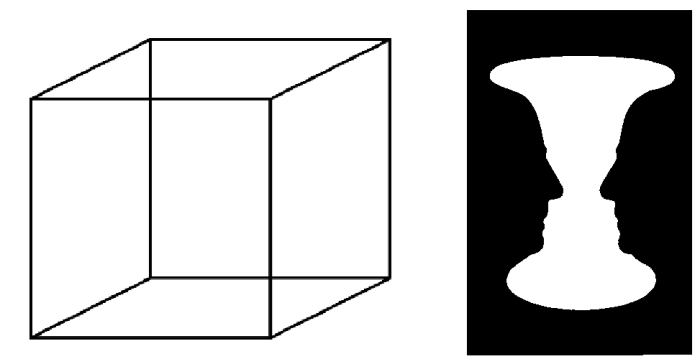
It’s a hop, skip and a jump through many other layers of complexity, but the the picture below exemplifies the extent to which our ability to explore the links between brain activity and mental phenomena has grown. The ‘in focus’ picture (left) is a clip from a movie that was presented to volunteers in an fMRI experiment, the ‘blurred’ picture (right) is a reconstruction from activity detected by the MRI machine. Not mind reading, but also clearly not just noise either.
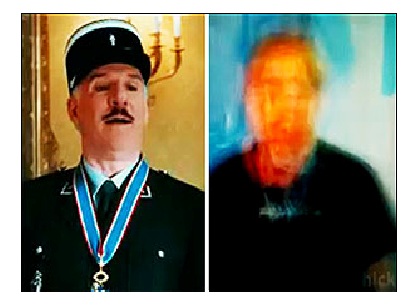
Another area of recent interest is visual prostheses, using our knowledge of the visual system to hack it, in the interest of restoring vision in those in whom it’s been damaged. A recent (excellent) episode of the great (and accesibly presented!) Brain Science Podcast focuses on this, and also discusses the role of the study of the visual system in the evolution of neuroscience, and the Macknik Lab‘s work on the OBServ approach.
What I’m trying to suggest is that the organisation of the way neurons react to stimuli – visual in this case, but it could be anything including ‘internal’ stimuli – is non-random and highly organised. And this organised reactivity, combined with a lot of other knowledge about physiology, genetics, molecular dynamics and so on allows us to build partial, but productive, models of how the physical stuff of the brain can bear a disciplined relationship to the features of our experience as conscious creatures.
Except, of course, it’s not that simple.
A large part of the work that been done in ‘single unit’ studies – direct electrical recording from cells, which informs our understanding of the visual cortical organisation discussed above – was performed with simple stimuli like gratings and edges and so on, not to mention the fact the data was not collected in humans. Even the impressive reconstructions from fMRI data are the results of contrived situations, were decisions are made about what stimuli to present and the way in which the algorithms that do the decoding are trained. People are usually happy to accept ‘vision’ as a valid category and don’t object to the idea of a ‘visual system’. But what about ‘high level’ categories we create for events in our mental lives: emotion, judgement, decision, valuation, consciousness. To what extent can we be sure that such ‘systems’ we see in brain activity are a function of the brain itself or, in contrast, the categories we choose to split phenomena into and by extension the questions we choose to ask?
We can’t. But that’s OK.
It’s fine that no single person can see the world except but through their own mental blinders, because – with luck – each person has a different set of blinders.Science isn’t just an impressive canon of established facts, it’s a process for evaluating the relative merits of competing ideas. In the context of brain science the assertion that the mind is in – in some senses, at least – synonymous with the brain is an approach, not an established fact: an approach that has been extremely fruitful, and one I would suggest has yet to exhaust its usefulness. Of course, this means there’s a problem is when we all share the same blinkers. In this case we have to hope to be nudged out of our complacency by genius, circumstance or novelty. Sometimes, all three.
Undoubtedly, only artists devote themselves to science…
One of the foundation stones of the modern understanding of brain physiology and function is something called The Neuron Doctrine. It’s a heavy sounding name for something quite simple: neurons are cells – individual units – like those found elsewhere in the body. This innocuous seeming idea was a big deal in 1890s because of the prevailing wisdom at the time. The standing model for nervous physiology was reticular theory, which held that everything in the nervous system was one continuous, unbroken interlinked mass. The interesting thing is that the decisive work that toppled reticular theory, performed by the Spanish histologist Santiago Ramón y Cajal, was undertaken with something called the Golgi method which was developed by the greatest defender of reticular theory, Camillo Golgi. The two men had access to the same methods, the same facts, and both were accomplished scientific artists after the fashion of a time without advanced imaging technology (see below). But, due to the preparation of circumstance and a different perspective, Cajal was able to see the significance of something that, for Golgi, was extraneous detail.
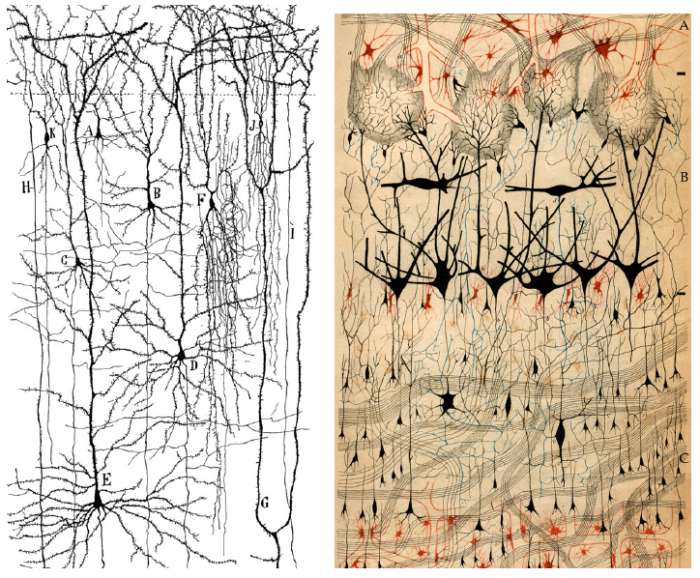

4 thoughts on “Your Brain…in Images: Seeing is believing. Maybe.”